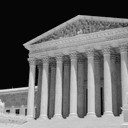Wiggins v. Smith, No. 02 – 311. (June 26, 2003)
In a 7 – 2 decision, the United States Supreme Court reversed and remanded the sentence of Maryland death row inmate Kevin Wiggins on the basis of inadequate representation by his original trial attorneys. Standard procedure in Maryland at the time of the trial included preparation of a “social history” report that would contain mitigation investigations regarding the case. As no such report was prepared or even requested, Justice O’Connor, writing for the Court, remarked that “[a]ny reasonably competent attorney would have realized that pursuing such leads was necessary to making an informed choice among possible defenses, particularly given the apparent absence of aggravating factors from Wiggins’ background.” The Court concluded that the “performance of Wiggins’ attorneys at sentencing violated his Sixth Amendment right to effective assistance of counsel.”
Because the trial attorneys failed to conduct even a minimally adequate mitigation investigation into Wiggins’ past, the jury was robbed of the opportunity to review Wiggins’ very powerful social history. The Court concluded that it was quite reasonable to assume that the jury would have reached a different sentence had they been apprised of such evidence.
Kaupp v. Texas, No. 02 – 5636.
The U.S. Supreme Court ruled unanimously to set aside the murder conviction of Robert Kaupp, a Harris County juvenile offender whose confession was deemed the product of an illegal arrest and should not have been introduced at his trial. In their decision overturning the Texas Court of Criminal Appeals, the Court found that the Harris County Sheriff’s Department illegally entered Kaupp’s home in the middle of the night and questioned the 17-year-old about the murder of a 14-year-old girl. The Court stated that the officers lacked probable cause and a warrant for Kaupp’s arrest when they entered the home. The Justices were critical of the Texas court and noted that Kaupp’s “failure to struggle with a cohort of deputy sheriffs is not a waiver of Fourth Amendment protection, which does not require the perversity of resisting arrest or assaulting a police officer.” Though this was not a capital case, the Supreme Court has recently reviewed a series of murder convictions from Texas. (New York Times, May 6, 2003) Read the decision.
Woodford v. Garceau, No. 01 – 1862.
In a 6 – 3 decision, the U.S. Supreme Court clarified what the triggering event should be for the application of the Antiterrorism and Effective Death Penalty Act (AEDPA). In 1997, the Court held that AEDPA applied only to cases filed on or after its effective date. California death row inmate, Robert Garceau, filed a motion for the appointment of federal habeas counsel and for a stay of execution in federal District Court before AEDPA’s effective date. The Supreme Court held that because Garceau’s filing was not seeking a decision on the merits of his claim, it did not meet the requirement of filing before AEDPA’s effective date. Hence, AEDPA applies to his case. (Woodford v. Garceau, No. 01 – 1862 (2003) and Associated Press, March 25, 2003). Read the decision.
Miller-El v. Cockrell, No. 01 – 7662.
On February 25, 2003, the U.S. Supreme Court issued an 8 – 1 decision in favor of Thomas Miller-El, a Texas death row inmate who claims that Dallas County prosecutors engaged in racially biased jury selection at the time of his trial in 1986. The Court ruled in Miller-El v. Cockrell that Miller-El should have been given an opportunity to present evidence of racial bias during his federal appeal. The Court sent the case back to a lower court, where Miller-El could be granted a new hearing on his claims. “Irrespective of whether the evidence could prove sufficient to support a charge of systematic exclusion of African-Americans, it reveals that the culture of the district attorney’s office in the past was suffused with bias against African-Americans in jury selections,” Justice Anthony M. Kennedy wrote. (Associated Press, February 25, 2003) Read the opinion. For more information, see DPIC’s Web page, U.S. Supreme Court: Miller-El v. Cockrell.
Hain v. Mullin, No. 02 – 6438.
On January 27, the U.S. Supreme Court denied certiorari to Oklahoma death row inmate Scott Hain, a juvenile offender. The Court decided not to reconsider at this time the constitutionality of executing those who committed capital crimes at 16 or 17-years-old. In 1989, the Court held that the Eighth Amendment does not prohibit the death penalty for such crimes, but in 2002 Justices Stevens, Souter, Ginsburg, and Breyer called the execution of juvenile offenders a “relic of the past [that] is inconsistent with evolving standards of decency in a civilized society.” (In re Stanford (habeas corpus denied, dissent) (see below)). (New York Times, January 28, 2003)
Colburn v. Cockrell, No. 02 – 7910.
On January 21, 2003, the U.S. Supreme Court decided not to grant certiorari in the case of Texas death row inmate James Colburn. The Court had granted Colburn a stay of execution on November 6, 2002, and directed him to file a petition for a writ of certiorari. The Court denied the writ, choosing not to address the question of whether a mentally incompetent person can be executed if the issue of mental incompetency was not presented in his original federal habeas corpus petition. (New York Times, January 22, 2003).
Sattazahn v. Pennsylvania, No. 01 – 7574.
On January 14, 2003, the U.S. Supreme Court ruled that the Constitution’s bar against double jeopardy does not apply when a defendant is sentenced to death in a second trial after the first jury’s deadlock resulted in the defendant receiving a life sentence. Earlier, the U.S. Supreme Court had ruled that after a jury determined that there was sufficient evidence to establish legal entitlement to a life sentence, and the defendant was then sentenced to life, it was unconstitutional to seek the death penalty on retrial. In upholding the Pennsylvania Supreme Court, the U.S. Supreme Court distinguished David A. Sattazahn’s case from the earlier case by noting that the jury deadlocked in determining Sattazahn’s sentence, and because of the deadlock, the trial judge was bound by Pennsylvania law to sentence him to life in prison. Because neither the jury’s deadlock nor the judge’s entry of a life sentence constituted an “acquittal” of the capital sentence, the U.S. Supreme Court held (5 – 4), that jeopardy did not attach and that it was constitutional for Sattazahn to be sentenced to death at his second trial.
The dissent stated that this ruling interfered with a defendant’s right to appeal. Justice Ruth Bader Ginsburg wrote, “The court’s holding confronts defendants with a perilous choice. A defendant in Sattazahn’s position must relinquish either her right to file a potentially meritorious appeal, or her state-granted entitlement to avoid the death penalty.” (New York Times, January 15, 2003) Read the opinion.
Abdur’Rahman v. Bell, No. 01 – 9094.
On December 10, the U.S. Supreme Court dismissed without deciding the case of Abu-Ali Abdur’Rahman, who is on death row in Tennessee. The Court heard arguments in the case on November 6, 2002, but declined to issue a ruling. Justice Stevens dissented from the order, stating:
He has argued that the evidence already presented to the court proves that the prosecutor was guilty of serious misconduct; that affidavits executed by eight members of the jury that sentenced him to death establish that they would have not voted in favor of the death penalty if they had known the facts that the prosecutor improperly withheld or concealed from them; and that it is inequitable to allow an erroneous procedural ruling to deprive him of a ruling on the merits. In this Court, a brief filed by former prosecutors as curae urges us to address the misconduct claim, stressing the importance of condemning the conduct disclosed by the record. Arguably it would be appropriate for us to do so .…
(Abdur’Rahman v. Bell, 537 U.S. _(2002)). Read Justice Stevens’ dissent. Prior to the Courts grant of certiorari, a lower court ruled that it was too late for Abdur’Rahman to present new evidence in federal court. Abdur’Rahman’s petition for certiorari asked the court to consider: (1) whether the Sixth Circuit erred in holding, in square conflict with decisions of the Supreme Court and of other circuits, that every Rule 60(b) Motion constitutes a prohibited “second or successive” habeas petition as a matter of law, and (2) whether a court of appeals abuses its discretion in refusing to permit consideration of a vital intervening legal development when the failure to do so precludes a habeas petitioner from ever receiving any adjudication of his claims on the merits. (Associated Press, 4/22/02) See also, DPIC’s Web page, U.S. Supreme Court: Abdur’Rahman v. Bell.
Woodford v. Visciotti, No. 02 – 137.
The U.S. Supreme Court in a per curiam decision reversed the Ninth Circuit’s grant of habeas corpus relief to California death row inmate John Visciotti. The Ninth Circuit decision had affirmed the district court’s grant of sentencing relief because of ineffectiveness of counsel and found that the California Supreme Court’s decision in Visciotti’s case was both contrary to and an unreasonable application of Strickland v. Washington. However, the U.S. Supreme Court held that the state supreme court faithfully applied Strickland and that the Ninth Circuit panel erred in requiring consideration of potentially mitigating evidence.
In re Stanford, No. 01 – 10009.
The U.S. Supreme Court refused to consider direct relief for Kevin Stanford, a juvenile offender who petitioned the court to consider the constitutionality of executing such offenders. Justices Stevens, Souter, Ginsburg, and Breyer dissented, calling the execution of juvenile offenders a “shameful practice.” The Justices stated, “The practice of executing such offenders is a relic of the past and is inconsistent with evolving standards of decency in a civilized society.” Stanford’s petition was an unusual appeal, since he had previously exhausted the typical ways for obtaining relief. The four votes for taking this case would have been enough for the High Court to decide this issue if presented in an ordinary petition for certiorari. The temporary delay in deciding the juvenile execution issue gives states the opportunity to resolve it themselves. States could also stay the executions of juvenile offenders because of the likelihood that the Court will clear up this issue in the near future. Read the dissenting opinion.
Foster v. Florida, No. 01 – 10868.
The U.S. Supreme Court declined to decide the case of Charles Foster, a Florida inmate who has served 27 years on death row. Foster asked the Court to determine whether the lengthy proceedings in his case violate the Eighth Amendment’s ban on cruel and unusual punishment. In a dissent from the denial of certiorari, Justice Breyer wrote that the Court should hear the case, noting, “The length of [Foster’s] confinement has resulted partly from the state’s repeated procedural errors.” Breyer added:
Death row’s inevitable anxieties and uncertainties have been sharpened by the issuance of two death warrants and three judicial reprieves. If executed, Foster, now 55, will have been punished both by death and also by more than a generation spent in death row’s twilight. It is fairly asked whether such punishment is both unusual and cruel.
Justice Stevens has raised similar concerns in other cases. Justice Breyer noted that international courts have found such confinement on death row to be shocking and degrading. (Foster v. Florida, No. 01 – 10868, 537 U.S.__ (2002) (Breyer, J., dissenting)).


